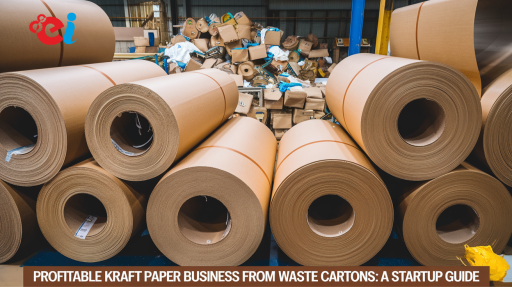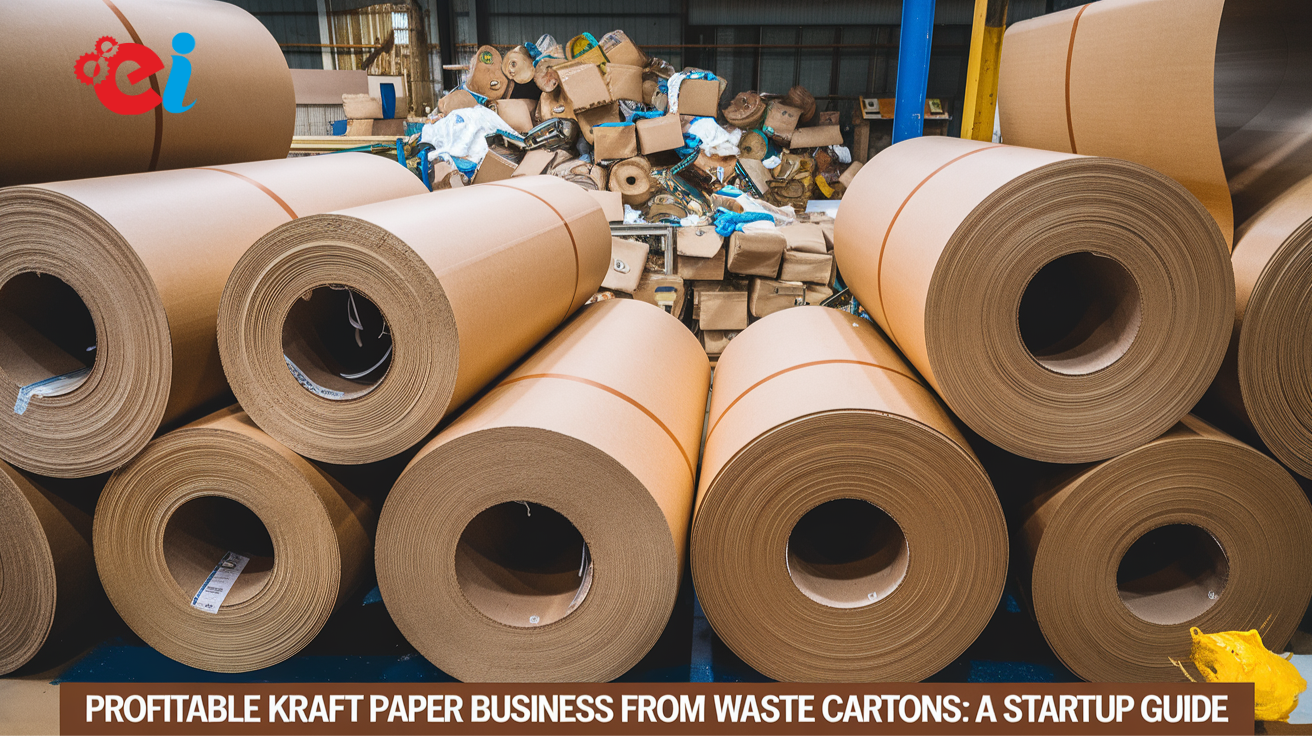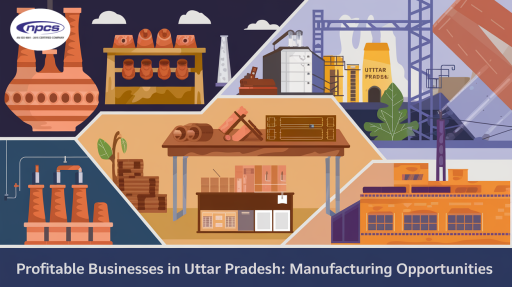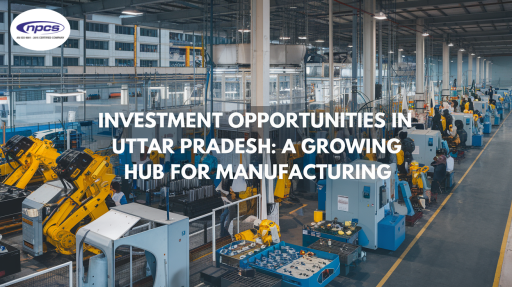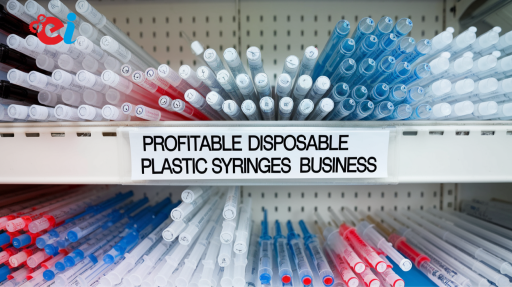Establishing a kraft paper business that utilizes waste cartons creates an attractive business opportunity. The business enterprise promotes sustainable practices while satisfying the rising market requirement for environmentally safe commodities. The field offers promising possibilities to entrepreneurs due to its profitable nature.
Understanding Kraft Paper
- Definition and Uses
Successful as both durable and strong material Kraft paper remains. Kraft paper exists as one of the principal materials for packaging purposes. The material has three main uses, which are wrapping goods, serving as industrial packaging, and making shopping bags. Manufacturers choose it because it demonstrates high reliability in their operations.
- Production Process
The manufacture of Kraft paper relies on turning used cartons into new products. The manufacturing process begins with pulping the material, then moves to screening and finally terminates in drying. The manufacturing approach leads to reduced harm to the environment. It also ensures cost efficiency.
- Market Demand
The worldwide market demand for kraft paper continues to increase. Businesses seek sustainable packaging solutions. Consumers prefer eco-friendly alternatives. This trend drives market growth.
Market Potential
- Global Market Size
The market value for Kraft paper amounted to $17.11 billion during 2023. The projected market value for Kraft paper is $22.40 billion, which will be achieved by 2032. The market shows constant growth at a yearly rate.
- Key Growth Factors
Sustainability trends increase demand. The transition toward environmentally friendly packaging systems has positive effects on this industrial sector. The market supports recycling-based industries through government-imposed regulations.
- Industry Applications
The manufacturing sector implements Kraft paper as one of its essential materials. The industries for kraft paper consumption comprise e-commerce and retail as well as manufacturing operations. Manufacturers using the food industry need kraft paper packaging solutions.
Advantages of Using Waste Cartons
- Cost Efficiency
The recycling process for waste cartons creates monetary savings for manufacturers. This approach enables businesses to decrease their dependency on new raw materials. This makes production more affordable.
- Environmental Benefits
The use of waste cartons prevents materials from occupying landfills. It helps in reducing deforestation. Recycling conserves natural resources.
- Energy Conservation
Recycling kraft paper through its production process needs reduced quantities of energy compared to virgin materials. It emits lower carbon footprints. This aligns with sustainability goals.
Step-by-Step Production Process
- Raw Material Collection
Various waste cartons are retrieved from multiple locations. The recycling centers, along with the packaging industries, make up the sources for raw material collection. The outcome is improved paper quality when products are correctly sorted during collection.
- Pulping Process
The water and paper mixture goes through destruction until it breaks into pieces. Chemicals help separate fibers. The liquid pulp serves as an essential material for kraft paper production.
- Screening and Cleaning
A screening process for pulp eliminates contaminants from the mixture. Unwanted materials are eliminated. A proper cleaning technique is achieved through this process.
- Drying and Rolling
The pulp is present in uniform, flat layers. It is then dried and pressed. The material ends up forming sheets of kraft paper through the final process.
Also Know About : Kraft Paper Industry
Factors Contributing to Profitability
- Low Raw Material Costs
The cost of manufacturing kraft paper from waste cartons proves to be lower than producing it from virgin pulp. This reduces production expenses. It increases profit margins.
- High Market Demand
Many industries require kraft paper. Three main industries, including packaging, e-commerce, and retail operation heavily depend on kraft paper. This ensures consistent demand.
- Governoperations,port
Policies favor recycling industries. Subsidies encourage sustainable production. Entrepreneurs benefit from financial incentives.
- Technological Advancements
Modern machinery improves efficiency. Automated processes lower labor costs. This enhances overall profitability.
Market Trends
- Shift to Eco-Friendly Packaging
Consumers prefer sustainable packaging. Businesses adopt green practices. Kraft paper demand rises significantly.
- Rise in E-Commerce
More supplies of packaging materials are necessary to support online shopping operations. Kraft paper meets this demand. The market utilizes Kraft paper as a wrapping material and for box lining applications.
- Growth in Food Packaging
Food chains need biodegradable packaging. Kraft paper replaces plastic materials. This further boosts its demand.
Challenges in the Industry
- Raw Material Price Fluctuations
Carton prices can increase unexpectedly. This impacts production costs. Businesses need excellent supply chain management systems for success.
- Competition in the Market
Many players enter this industry. Competitive pricing affects profit margins. Strategic planning ensures sustainability.
- Technological Upgrades
Machinery requires constant upgrades. Initial investments can be high. Organizations need to change their methods to stay competitive in their industry.
Government Policies and Support
- Recycling Incentives
Governments promote recycling businesses. Incentives make production cost-effective. This encourages industry growth.
- Environmental Regulations
Regulations mandate sustainable practices. All organizations need to fulfill requirements for environmental standards. This ensures long-term stability.
- Financial Support Programs
Startups receive subsidies and loans. These help in business expansion. Government schemes make entry easier.
Environmental Benefits of Kraft Paper Production
- Reduction in Landfill Waste
The process of recycling used waste cartons helps prevent the building up of refuse material. This improves waste management. It also benefits the environment.
- Conservation of Natural Resources
Using wood material only once reduces the need for forest harvesting. This protects biodiversity. The practice also supports enduring resource utilization practices.
- Energy Efficiency
The manufacturing process of recycled paper requires fewer energy resources. Carbon emissions are lower. This contributes to environmental sustainability.
Steps to Start This Business
- Conduct a Feasibility Study
Research market demand and costs. Analyze competitors and pricing. An insightful study improves project preparation procedures.
- Arrange Required Funding
Capital investment is necessary. Consider loans or government grants. Funding is essential for infrastructure.
- Set Up Manufacturing Unit
Install necessary equipment. Hire trained personnel. Ensure compliance with safety regulations.
- Secure Raw Material Supply
Partner with reliable suppliers. Maintain a steady supply chain. Quality control improves final products.
- Implement Marketing Strategies
Target industries needing kraft paper. Highlight sustainability benefits. Proper advertising should be used to establish brand visibility.
Conclusion
Operational efforts in kraft paper production from waste carton materials hold substantial profit potential. The product establishes alignment with sustainability goals while targeting the developing market needs. Business success depends on adequate planning executed by entrepreneurs. Such a business generates lasting financial benefits.
Project reports with professional guidance from Niir Project Consultancy Services are available for inspection. The organization provides its team members to offer thorough startup assistance. The industry growth receives substantial benefits from their professional expertise.

